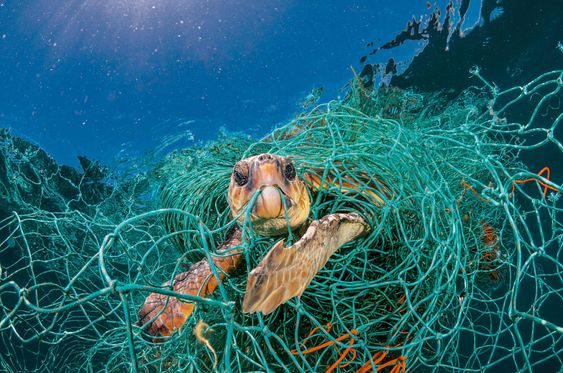I was born and raised on a small island in the middle of the Med.
My father was a merchant navy officer
All my childhood memories have the sea as a backdrop.
Dipping into the seawater is a celebration of rebirth EVERY time
So yes the sea for me is very important and I love to celebrate the world oceans day on the 8th of June.
The world oceans day, and this whole week I believe, there are several events around the world. The world’s oceans are facing a grave crisis caused by pollution, particularly ocean waste. The detrimental impact of plastic debris, discarded fishing nets, and other forms of waste on marine ecosystems cannot be overstated and we cannot ignore the rising temperatures due to climate change.
However, amidst this environmental tragedy, there is hope. A growing movement is emerging that aims to transform ocean waste into sustainable design, showcasing the potential for innovative solutions and responsible consumption.
I. The Problem of Ocean Waste
Ocean waste encompasses a wide range of materials, with plastic being a major contributor. Discarded fishing nets, often referred to as “ghost nets”, are another significant concern. These nets, abandoned or lost during fishing operations, continue to trap marine life and contribute to the entanglement and death of countless marine animals. “Ghost nets” account for approx 10% of marine waste.
However, I would like to bring to your attention as people in the built environment the enormous responsibility even for ocean waste. Microplastics found in seas count for 92% of plastic pollution that is around 14 billion tons of microplastics in the ocean today (source: americanoceans.org)
The scale of ocean waste is staggering, with visualizations showing the concentration of plastic pollution across the globe. The graphic below may astound you also. It visualizes the amount of plastic pollution thrown into the oceans per country. Upon further reading I found out that the amount of plastic is not directly correlated to the size of the population, as would seem to be the most obvious conclusion, but rather to the length in terms of km of shore directly on the oceans – It is for this reason the archipelago of the Philippines is so high up on the ranking. (consider also the importance of the fishing industry in this community)
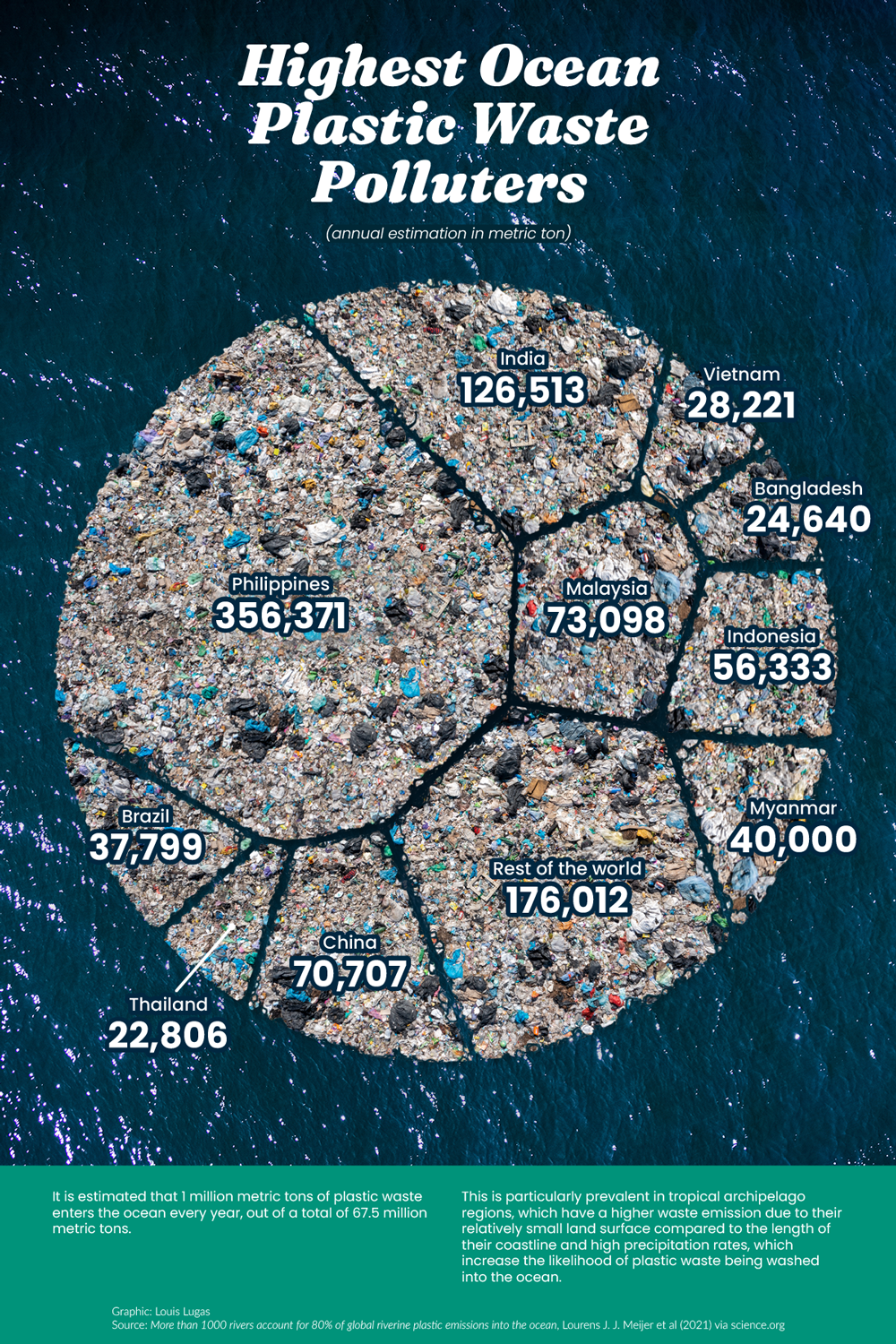
II. From Waste to Resource: The Potential of Ocean Waste
While ocean waste poses a severe threat, it also presents an opportunity for transformation. By adopting a circular economy approach, ocean waste can be repurposed and given new life. Instead of treating waste as an end product, it can become a valuable resource for sustainable design. This shift in perspective is crucial in minimizing the environmental impact and promoting a more responsible and efficient use of materials.
III. Sustainable Design Principles and Practices
Sustainable design encompasses a set of principles and practices that aim to reduce waste, minimize environmental impact, and prioritize long-term sustainability. Recycling, upcycling, and repurposing are key elements of sustainable design. By incorporating these principles into the design process, creators can breathe new life into ocean waste, transforming it into functional and aesthetically appealing products.
However, it is my personal conviction that whilst this is useful and necessary, there must be a surplus for recycled materials over new materials – because as plastic is not at all decomposable we need to reach a tipping point where there is much more demand for recycled goods over ones with fresh polymers – only in this way are we really cleaning up the oceans rather than maintaining the status quo.
And as we all know it is Demand that drives supply.
IV. Innovative Approaches to Transforming Ocean Waste
In the quest to transform ocean waste, various innovative technologies and processes have emerged. Companies and organizations are harnessing advanced recycling methods to convert plastic debris, including fishing nets, into new materials suitable for design applications. These technologies often involve the sorting, cleaning, and processing of ocean waste, ultimately yielding high-quality recycled materials ready for creative applications.
V. Designing with Ocean Waste: Furniture and Accessories
Second to the fashion industry, one sector actively engaged in transforming ocean waste into sustainable design is the furniture and accessories industry. Recognizing the need for eco-friendly alternatives, several brands have incorporated recycled ocean plastics and fishing nets into their products. By doing so, they contribute to reducing the demand for virgin materials while offering consumers sustainable options for furnishing their homes and offices.
Case Study 1: Interface is a well know carpet tile brand that uses the ocean as its main sourcing ground.
They have made significant strides in sustainable design by creating carpet tiles using ocean waste as a primary material. They collaborate with organizations such as Net-Works that collect discarded fishing nets from the seas, particularly in the Philippines. These nets are then processed and transformed into durable and stylish carpets, effectively reducing ocean waste while offering consumers environmentally friendly options for their interior spaces.
Case Study 2: Ocean Coil
The company Lightart focuses on designing accessories, such as lighting fixtures and home decor items, using recycled ocean plastics. They have recently introduced the award-winning collection Ocean Coil pendants made entirely of ocean-bound and nearshore plastic. Their commitment to sustainability extends beyond the choice of materials. They prioritize ethical manufacturing processes to create unique and eco-conscious products that not only reduce ocean waste but also promote fair trade practices.
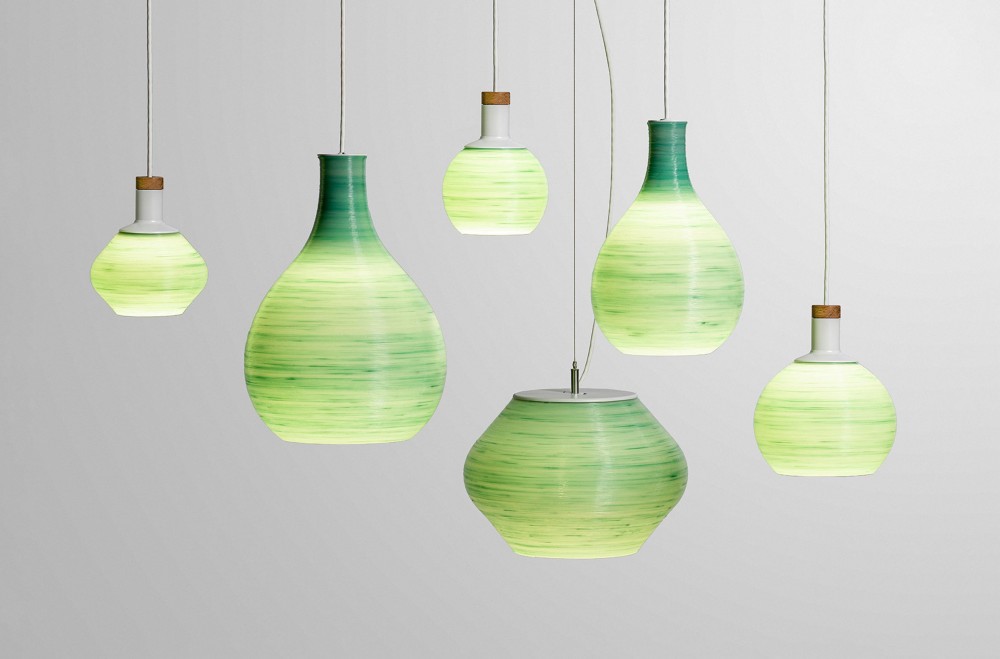
Case Study 3: Van de Sant
The Dutch company Van de Sant takes a circular approach not only for the ocean but also for wood. By manufacturing the frames of their sofas and armchairs they are reducing the consumption of wood.
By sourcing fabrics and materials from partners specialized in recycling materials they can create beautiful furniture whilst remaining aligned with their mission of being totally circular. Their holistic approach to ocean waste, not only incorporates recycled materials but also sees them actively participating in beach cleanups and awareness campaigns. By engaging with local communities, they create a sense of responsibility and empower individuals to take action against ocean pollution. Their product line showcases a range of furniture and accessories, serving as tangible reminders of the potential for transforming waste into beautiful and functional design.

credit: Van de Sant
Case Study 4 Dura Ocean Chairs
As we expand our outdoor life likewise is the market for outdoor furniture growing. One of the characteristics of outdoor furniture is that it does need to resist different weather conditions so wood and teck although beautiful need to be maintained: but plastic doesn’t, and this makes it a tempting alternative.
However, Dura Ocean came up with a beautifully designed chair that will change the landscape of our outdoor living and relieve us of any guilt.
Duraocean is made out of recycled maritime plastic, thought not only to be beautiful but also to be useful and helpful to the planet.
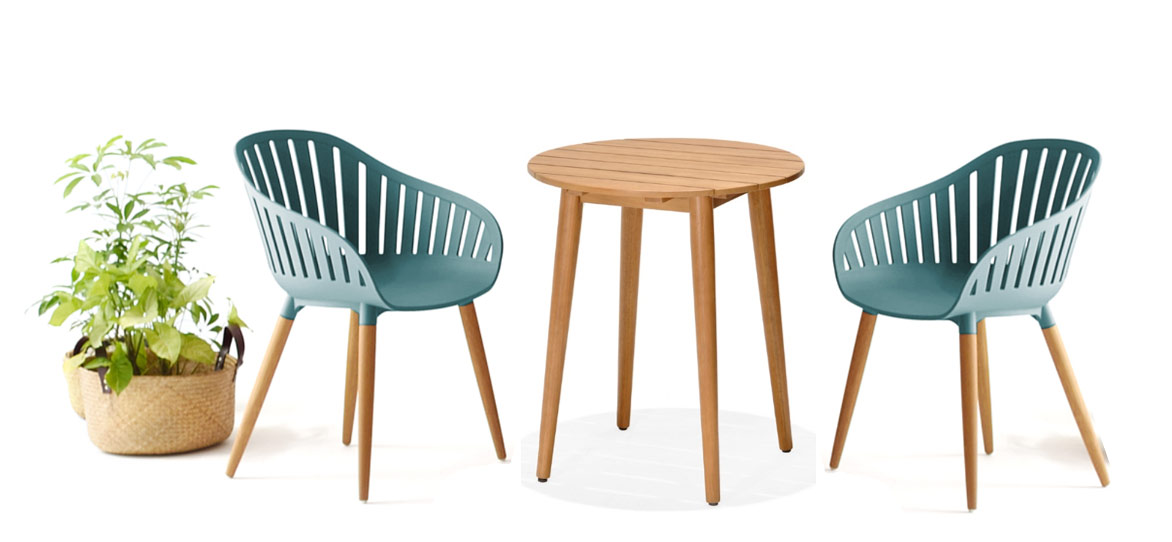
credit DuraOcean
VI. Collaborations and Partnerships
Transforming ocean waste into a sustainable design requires collaboration and partnerships between various stakeholders. Governments, non-profit organizations, designers, manufacturers, and local communities all play critical roles in driving change and creating a more sustainable future.
Governments can support these initiatives by implementing policies and regulations that encourage the use of recycled materials and sustainable design practices. They can provide funding and incentives for research and development in this field, as well as promote awareness campaigns to educate the public about the importance of reducing ocean waste.
The One Ocean Foundation does just that and there are also various and numerous other organizations that also support cleaning the oceans and recycling the debris
Non-profit organizations dedicated to ocean conservation often take the lead in coordinating efforts to collect fishing nets and other ocean waste. These organizations work closely with local communities, engaging fishermen and coastal residents to participate in cleanup activities. They provide the necessary infrastructure, tools, and training to ensure safe and effective collection and recycling processes. Just a few examples
Upcycling the oceans by EcoALF
Without these front-line workers, it would be difficult to develop an effective and capillary circular economy.
Designers and manufacturers also have a crucial role in creating innovative products that incorporate recycled ocean waste. Through their creativity and expertise, they transform discarded materials into functional and aesthetically pleasing designs. Collaborations between designers, manufacturers, and recycling facilities are essential to ensure a steady supply of high-quality recycled/upcycled materials and to optimize the manufacturing processes.
VII. The Philippines: A Case Study in Fishing Net Recycling
The Philippines serves as an excellent case study in the recycling of fishing nets. The country has a significant fishing industry, which also means a high amount of discarded fishing nets. Various organizations, such as the Healthy Seas Initiative and the Global Ghost Gear Initiative, have partnered with local communities and fishermen to collect these nets and recycle them into new materials.
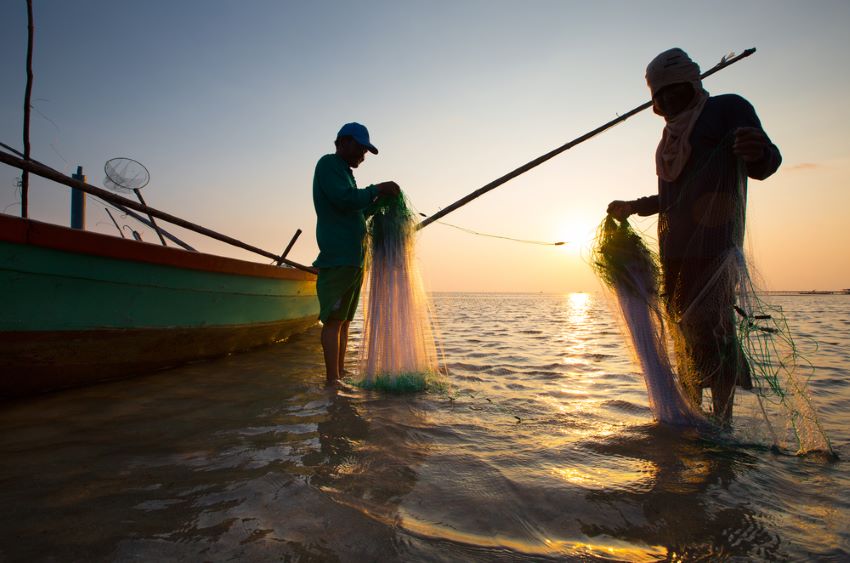
These organizations provide incentives for fishermen to bring their old or damaged nets ashore instead of discarding them at sea. The collected nets are then sent to recycling facilities where they undergo a thorough cleaning and processing process. The resulting materials, such as nylon pellets or yarn, can be used in the production of textiles, including those used in the furniture and fashion industries.
These initiatives not only help reduce ocean waste but also provide economic opportunities for local communities. By incentivizing the collection of fishing nets, fishermen can generate additional income while contributing to environmental conservation efforts.
Some fabrics made of fishing nets are:
- Econyl
- Bionic
- Reblend circular economy
Conclusion
The journey from ocean waste to sustainable design is a collective effort that involves not only businesses but also consumers. Consumer awareness and responsible choices play a significant role in supporting /brands that prioritize sustainability and reducing ocean waste. By making informed purchasing decisions and demanding eco-friendly products, individuals can contribute to the broader movement of cleaning up our oceans.
Furthermore, government support and regulations are instrumental in creating an enabling environment for sustainable design initiatives. By providing funding, and incentives, and implementing policies that promote the use of recycled materials, governments can drive innovation and accelerate the transition towards a more sustainable future.
Through innovative technologies, collaborations, and responsible consumption, we can turn trash into treasure, creating functional and aesthetically pleasing products while preserving our marine ecosystems.
On a final note, I would like to refer to a conference I heard just yesterday during the oceans week summit. The Ocean is an asset; it is blue carbon that can save the world if we look after it.
